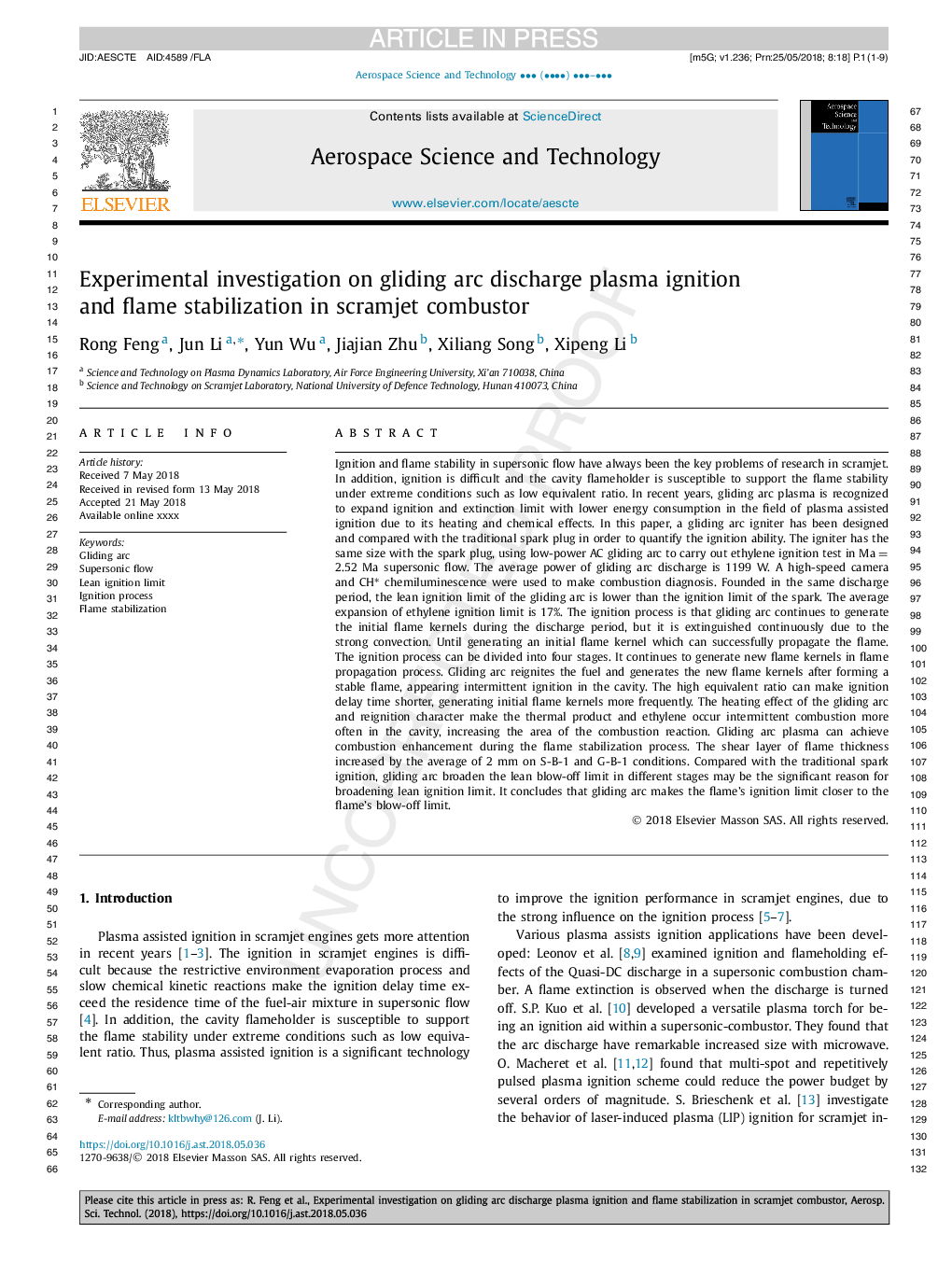| Article ID | Journal | Published Year | Pages | File Type |
|---|---|---|---|---|
| 8057344 | Aerospace Science and Technology | 2018 | 9 Pages |
Abstract
Ignition and flame stability in supersonic flow have always been the key problems of research in scramjet. In addition, ignition is difficult and the cavity flameholder is susceptible to support the flame stability under extreme conditions such as low equivalent ratio. In recent years, gliding arc plasma is recognized to expand ignition and extinction limit with lower energy consumption in the field of plasma assisted ignition due to its heating and chemical effects. In this paper, a gliding arc igniter has been designed and compared with the traditional spark plug in order to quantify the ignition ability. The igniter has the same size with the spark plug, using low-power AC gliding arc to carry out ethylene ignition test in Ma = 2.52 Ma supersonic flow. The average power of gliding arc discharge is 1199 W. A high-speed camera and CHâ chemiluminescence were used to make combustion diagnosis. Founded in the same discharge period, the lean ignition limit of the gliding arc is lower than the ignition limit of the spark. The average expansion of ethylene ignition limit is 17%. The ignition process is that gliding arc continues to generate the initial flame kernels during the discharge period, but it is extinguished continuously due to the strong convection. Until generating an initial flame kernel which can successfully propagate the flame. The ignition process can be divided into four stages. It continues to generate new flame kernels in flame propagation process. Gliding arc reignites the fuel and generates the new flame kernels after forming a stable flame, appearing intermittent ignition in the cavity. The high equivalent ratio can make ignition delay time shorter, generating initial flame kernels more frequently. The heating effect of the gliding arc and reignition character make the thermal product and ethylene occur intermittent combustion more often in the cavity, increasing the area of the combustion reaction. Gliding arc plasma can achieve combustion enhancement during the flame stabilization process. The shear layer of flame thickness increased by the average of 2 mm on S-B-1 and G-B-1 conditions. Compared with the traditional spark ignition, gliding arc broaden the lean blow-off limit in different stages may be the significant reason for broadening lean ignition limit. It concludes that gliding arc makes the flame's ignition limit closer to the flame's blow-off limit.
Related Topics
Physical Sciences and Engineering
Engineering
Aerospace Engineering
Authors
Rong Feng, Jun Li, Yun Wu, Jiajian Zhu, Xiliang Song, Xipeng Li,
